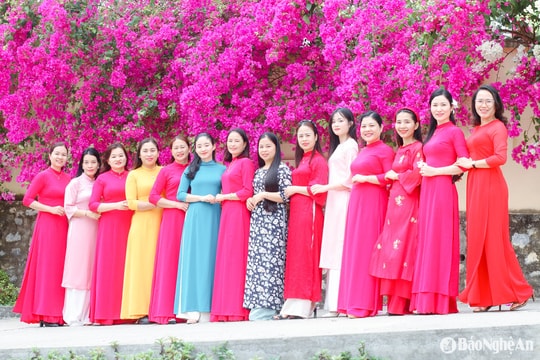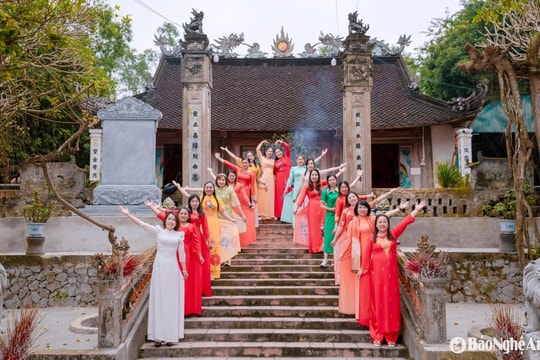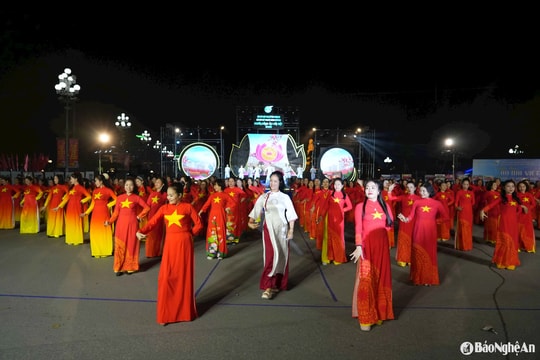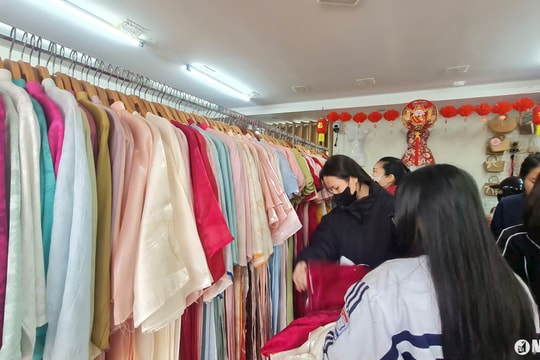Renaissance of the beauty of Ao Dai in March
The Department of Culture, Sports and Tourism of Ho Chi Minh City has organized a call and mobilized women in the city to wear Ao Dai throughout the month of March, from daily activities to work, to welcome the Ao Dai Festival of Ho Chi Minh City and International Women's Day on March 8.
A series of events honoring the Ao Dai are held throughout March. The highlight is that from Sunday 6/3 (and Sundays 13 and 20/3), the journey "Ao Dai City - The City I Love" starts from the Student Cultural House to cultural and historical sites in the city. Students participating in the journey will wear Ao Dai and travel by bicycle.
The art program “Ao Dai - Endless Beauty” will open at exactly 6:30 p.m. on International Women’s Day at the Youth Cultural House. The photo exhibition “Ao Dai through the ages” will take place at the City Fine Arts Museum, Ao Dai Museum, War Remnants Museum and Chi Lang Park (Dong Khoi Street). At the Ao Dai Museum, there will be an Ao Dai festival lasting from March 5 to the end of March.
In addition, there are the "Charming Ao Dai" photo contest, Ao Dai design contest for university students in the city, Ao Dai flower arranging contest and Ao Dai flower performance for international and Vietnamese flower designers on March 19 and 20...
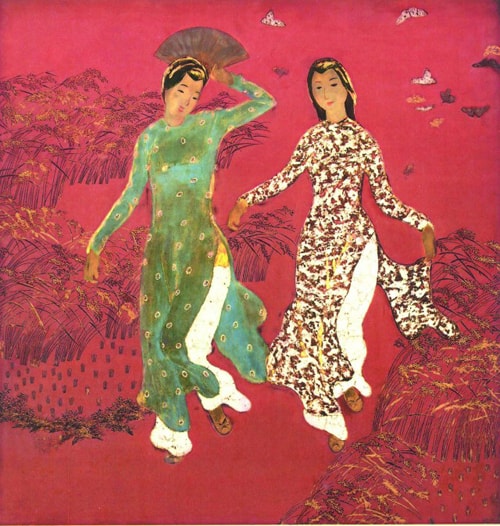 |
| Vietnamese women's ao dai becomes a beautiful image in lacquer paintings. |
The Vietnamese Ao Dai is truly a timeless beauty. Although over the years, the Ao Dai has been innovated and stylized many times, it still retains its own unique character that cannot be confused with any other national costume. It is the soul of the nation.
Since the 1930s, artist Cat Tuong of the Ngay Nay magazine, a member of the Tu Luc Van Doan, was the first person to design a modernized version of the traditional ao dai, which he named “Ao dai Le Mur” and printed in the Ngay Nay magazine (“le mur” in French means the wall, which is his pen name Cat Tuong).
After 1954, in the South, the ao dai was reformed and stylized many times. But the most memorable was the ao dai with a very wide round neck worn by Mrs. Tran Le Xuan, wife of advisor Ngo Dinh Nhu. According to many people, President Diem was very upset when his sister-in-law wore this ao dai with a wide neck to meet foreign guests. During this time, the ao dai had a very high collar, a very long hem and especially a very tight waist. The "Mrs. Nhu's ao dai" was not popular and few people wore it.
In the late 1960s, the ao dai had a breakthrough with the “raglan sleeve” ao dai - meaning the sleeves did not extend across the shoulders but from the armpits to the neck, the hem was short, almost reaching the knees, and the waist was quite wide, not as tight as before. High school girls at that time were required to wear ao dai to school, and young girls loved this type of ao dai because it was very comfortable. The image of female students wearing white ao dai cycling on tree-lined streets in the city was an endless subject for countless poems, literature, music, and paintings.
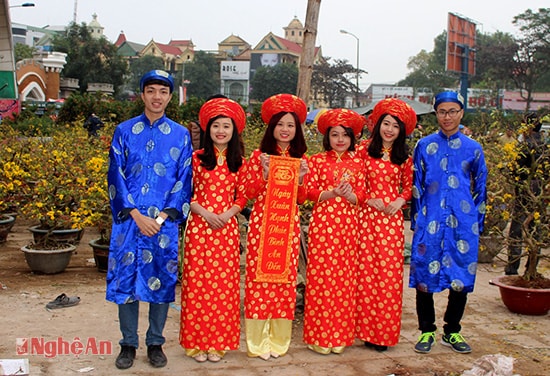 |
| Young people in Vinh city wear ao dai to take Tet photos. |
Although the economy was extremely difficult during the subsidy period, the ao dai still existed. Occasionally, it still appeared in receptions and traditional weddings. But the paradox is that after the opening and renovation period, when the economy improved, the ao dai almost disappeared, overwhelmed by the fashion trends of long skirts, short skirts, and flared dresses that flooded into our country, captivating many young girls. We rarely see the ao dai at important events, parties, and weddings. Only the ao dai follow the flight attendants of Vietnam Airlines to fly all over the world. And it is admired by many women around the world.
It was not until more than 40 years after the reunification day, in 2015, that the Department of Education and Training of Ho Chi Minh City coordinated with the City Youth Union to implement the "School Ao Dai" plan to encourage female students of secondary and high schools to wear Ao Dai when going to school. It was only encouraged, not required. And female civil servants and officials of departments, branches and districts in the city now have to wear Ao Dai on the first day of the week to salute the flag. The revival of the beautiful traditional Ao Dai, although too late, is still better than nothing.
Legal
| RELATED NEWS |
|---|


